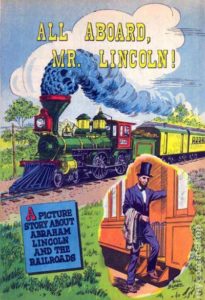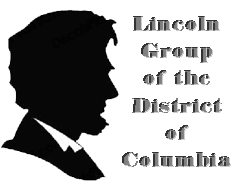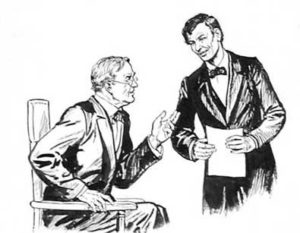 On June 23, 1854, Abraham Lincoln draws on his account at the Illinois Central Railroad. The ICRR had been a repeat source of work for the Lincoln, who had been focusing on his legal career after being relegated to the sidelines politically. He would not be in an elected position for eleven years. He did a variety of work for several railroads, but the ICRR by far was the most prolific and profitable. Still, he wasn’t making much money per case.
On June 23, 1854, Abraham Lincoln draws on his account at the Illinois Central Railroad. The ICRR had been a repeat source of work for the Lincoln, who had been focusing on his legal career after being relegated to the sidelines politically. He would not be in an elected position for eleven years. He did a variety of work for several railroads, but the ICRR by far was the most prolific and profitable. Still, he wasn’t making much money per case.
In this particular letter, Lincoln writes the ICRR attorney Mason Brayman in Chicago to indicate that he is collecting payment for a slew of small cases done for the railroad. He writes:
Dear Sir: Sept. 23, 1854
This is the last day of court here, and being about to leave, I have drawn on the I.C. R R Co or rather on you on their account, for $100, which the McLean County Bank have negociated for me. I have directed them to have the draft presented to you. Will you please see that it shall be honored?
The reason I have taken this liberty is, that since last fall, by your request I have declined all new business against the road, and out of which I suppose I could have realized several hundred dollars; have attended, both at DeWitt and here to a great variety of little business for the Co, most of which, however, remains unfinished, and have received nothing. I wish now to be charged with this sum, to be taken into account on settlement. Truly Yours &c A. LINCOLN
P.S. The draft is in favor of Mr. Pardee, who is Cashier of the Bank.
The other key element of the above letter is that he gave up opportunities to make money from individuals suing the ICRR. There were other cases in which Lincoln did work against the railroad, but these were outside of the retainer agreement.
And then there was the time that Lincoln sued the ICRR railroad directly for the sum of $5000. [Click on the link for that story]
Overall, railroad cases made up only four percent of Lincoln’s caseload overall, about 160 cases, but they were some of the most lucrative of his career. He tried cases for or against fourteen separate railroad companies, with some railroad names changing as lines merged or were replaced. Some of these cases set important precedents, both for railroad rights and worker rights. He would also be instrumental in the final determination of the transcontinental railroad route.
I look more at Lincoln’s work for, and against, the railroads in my forthcoming book, due out in 2022.
David J. Kent is an avid science traveler and the author of Lincoln: The Man Who Saved America, in Barnes and Noble stores now. His previous books include Tesla: The Wizard of Electricity and Edison: The Inventor of the Modern World and two specialty e-books: Nikola Tesla: Renewable Energy Ahead of Its Time and Abraham Lincoln and Nikola Tesla: Connected by Fate.
Check out my Goodreads author page. While you’re at it, “Like” my Facebook author page for more updates!



 Back in mid-July, I was happy to report that the Lincoln Group of DC was going back to live, in-person, programming. What a difference a couple of months makes. As readers will already have seen, our October meeting with Ron White, originally planned as a big in-person luncheon shindig complete with special surprises, is not going to happen. Ron has rightfully reconsidered his travel to the east coast because of the pandemic. Instead, Ron will give us a virtual presentation on
Back in mid-July, I was happy to report that the Lincoln Group of DC was going back to live, in-person, programming. What a difference a couple of months makes. As readers will already have seen, our October meeting with Ron White, originally planned as a big in-person luncheon shindig complete with special surprises, is not going to happen. Ron has rightfully reconsidered his travel to the east coast because of the pandemic. Instead, Ron will give us a virtual presentation on  On September 10, 1856, Abraham Lincoln wrote an affidavit in a medical malpractice case that involved chicken bones. It was the first medical malpractice case in McLean County.
On September 10, 1856, Abraham Lincoln wrote an affidavit in a medical malpractice case that involved chicken bones. It was the first medical malpractice case in McLean County. I see you printed that long letter I sent you a spell ago—I’m quite encouraged by it, and can’t keep from writing again.
I see you printed that long letter I sent you a spell ago—I’m quite encouraged by it, and can’t keep from writing again.






